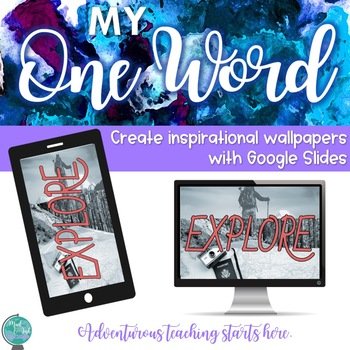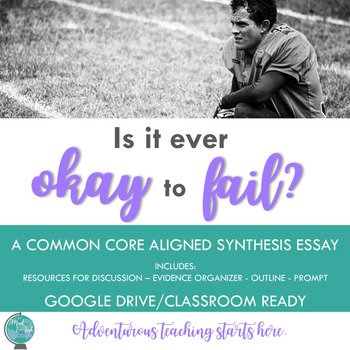Emergency Sub Plan Ideas for Secondary ELA
Whether you’re teaching in the land of quarantine unrest or need to make use of FMLA, unforeseen absences can be a huge source of stress for teachers. Here in this post, I have curated resources and strategies for facing these unpredictable absence days or even days where learning has switched from in-person to hybrid or virtual learning. As always, I’d love to hear what you use or any other ideas you’d like to add in the comments at the bottom of this post!
QUICK ONE-DAY IDEAS
Sometimes, we know that the sub will only be in for one day or one class period, and in this case, a quick-fix type of emergency sub-plan is a perfect fit. Here are some low maintenence, self-paced, easy options to consider for the short-term:
ONE PAGERS
Betsy from Spark Creativity has these wonderful one-pager templates as a free download. Print off a stack and leave directions with the sub and you’re done!
LONG TERM IDEAS
If you need something pre-made and ready to go, skip this section and scroll down. If you have the brain space to think through a more personalized game plan, keep reading.
Sometimes, we’re out longer than just a day or two, and more frequently now than ever, an extended absence can come out of the blue. When it comes to long-term sub plans, I want to give you a mindset game plan before I give you ideas. Being strategic about a long-term sub plan can save tons of frustration and anguish if we take a few steps in setting up a game-plan.
SET A THEMATIC OR QUESTION-BASED ARC
If you’ve been around Mud and Ink for a while, you’ve heard me evangelize about Essential Questions (and for good reason!) and this would be my best piece of advice to you — write ONE juicy, interesting question and you’ve got yourself a project. Let me demonstrate how this works in an emergency situation:
SCENARIO: You’re in the middle of reading Fahrenheit 451 but now have to be absent for an unknown amount of time due to quarantine rules. Let’s push PAUSE on the initial unit plans, and enter emergency lesson plan mode and think about a big question that connects to the themes of Fahrenheit but also has relevance and connections to our modern world.
Possible questions include:
When surveillance protocols are put into place, are they more likely to give protection or cause harm?
If books are erased from a society, what is to become of that world?
As technology continues to advance, what happens if that advancement is not in balance with nature?
This question will drive WEEKS worth of reading, TED Talk viewing, podcast listening, or whatever other kinds of resources you can find. One question can connect what you’re ACTUALLY doing in class to a hands-off, project-based, student choice exploration of relevant resources.
START WITH THE END IN MIND
Rather than thinking day to day to day from the first day you’ll be out, instead, take a deep breath and start thinking about PRODUCTS that students can submit after several days of work. This is a project-based mindset and it’s so much more realistic and productive for everyone involved to be working toward one, big product than trying to come up with new, unrelated activities day-to-day. Ideas for end-products include:
Building a Google Site or Adobe Spark Page
Preparing for a virtual or in-person seminar of fishbowl (for virtual use Parlay Ideas!)
Writing an essay (in a format/style that they already know or have practice with)
Create a video (Vimeo create, Adobe Spark, Canva, WeVideo, Animoto, PowToon, etc.)
One-Pager (check out Betsy’s here)
So let’s head back to our initial scenario and you choose the question: If books are erased from a society, what is to become of that world? The project that you’ve just created looks like this:
FOR A GOOGLE SITE
DIRECTIONS: This week, it is your job to explore the provided resources and create a Google Site that answers the question: If books are erased from a society, what is to become of that world?
HOME PAGE: Here is where you’ll create a visual collage that demonstrates the many different ways that the question could be viewed. You should also have the question prominiently displayed in the heading
TAB 1: This will be your first reference/source that you read. Lable the tab as Source 1 or with the name of the actual source. On this page please include:
A visual (a picture related to the article, a screen shot of the video, etc.)
The title and author of the source
One direct quotation from the source AND your explanation and analysis of this quotation. What does this direct quote reveal about the big question we are answering in this project?
A 3-4 sentence summary of the article and its central claim.
TABS 2-?: Repeat instructions for TAB 1
FINAL CONCLUSIONS: This is the last tab that should be included in the Google Site. On this page, you will provide your final conclusions and personal response to the question: If books are erased from a society, what is to become of that world? Your response should be two body paragraphs in length and utilize at least ___ of the sources that you explored over the past few weeks.
I know this LOOKS like a lot, but it’s so much more to explain than to actually do! A very similar set of instructions works for other types of products, just adjust based on the platform!
SELECT THE ITEMS
Finally, you’ll need a library of articles, videos, and other resources for students to peruse, read, watch, and experience in order to create that final product. The more you include, the more days this can stretch out for.
If you have a little bit of time to organize your items, think about building a choice board (here’s a YouTube video showing how to do this). Create a table in Google Docs or on Slides. You can categorize each of the columns by labeling the top (“Articles” “Videos” “Songs”, etc.) and then fill in each of the boxes below with the title of the resource and a link to access that resource.
Another option for creating a resource hub for articles and videos is Actively Learn. Actively has a few more special features, including note taking and highlighting, that are worth checking out. You can upload only up to three sources only on the free plan, but they have a lot of resources in their library, too!)
If you have very little time, dump all of the articles, videos, and other resources into a Wakelet. This is an easy-to-use homebase that will make your “dump” seem organized. You can even have students add to the Wakelet by sharing editing rights with them! You can also do this in Actively Learn and utlize a few more special features (up to three sources only on the free plan, but they have a lot of resources in their library, too!)
SO HERE’S THE PLAN
Day 1: Introduce the project, question/theme, and platform that will be used
Today is the day that students create the bones of the Google site, create their account for their video maker, watch a tutorial on using Animoto, etc. Give students time to organize and get comfortable with this tool and play with the customization features.
Day 2: Exploring the resources
This is the lesson plan that you get to copy and paste for as many days as needed. Since the final product is to answer the question that is driving this project, each of your resources is connected by that question. Students will need multiple days to access a variety of the resources you’ve provided, so create a system for this lesson that you can rinse and repeat. Something like:
Select one resource that intrigues you from the choice board/ Wakelet / Actively Learn
Read/watch this resource, and while doing so, jot down notes and ideas that provide insight into the project question that we’re looking to answer.
Complete the Google Form at the end of reading the resource. (make a quick Google form for accountability if you think it would help. Use the same one every day.)
Add a component to the final product from this resource (a quote, an image, a summary, etc.)
Day 3 - ?: Same as Day 2
Reuse this lesson plan for as many days as needed as students switch out the resources they’re reading/watching/responding to.
Last Days: Add final details to the project, proofread, and submit!
I HAVE NO TIME - GIVE ME SOMETHING READY TO GO NOW
Okay. No problem. Here are my long term sub plan solutions:
A SYNTHESIS ESSAY/DISCUSSION WEEK
I have a huge bundle of synthesis questions that are ready to go with ten articles and sources already laid out for you. These questions and resources can be stretched for as many days as you might need, and, if you finish one, jump on to the next. The questions are student friendly and engaging, and even if you’re stepping outside of your curriculum, I guarantee these are the skills that all high school readers and writers need to practice.
Day 1: Introduce the prompt and students read their first resource of choice. Add 1-2 pieces of evidence to the evidence tracker.
Day 2: Students read their second and third sources of choice. Add 1-2 pieces of evidence to the evidence tracker.
Day 3: Students read their final source of choice. Add 1-2 pieces of evidence to the evidence tracker.
Days 4-?: Students draft a claim (formalize their answer to the synthesis question) and begin outlining their arguments. Students then write 1-2 body paragraphs in support of that claim (they can do this ON the outline if they need the support of organization!)
Last Day: Students participate in the virtual socratic seminar on Parlay Ideas. Copy and paste my prompt and articles into the Roundtable and assign.
Here are a few questions to get you started:
A DIGITAL CHOICE BOARD
I have over a dozen digital choice boards made and ready for you to use. Each board corresponds with heritage month celebrations and some are genre-focused. Each choice board comes with a Google Form ready to use. Assign the board, assign the form, and use for as many days as needed (there are 25 buttons on each choice board!)
A LITERARY SCAVENGER HUNT
This is a fancy review packet that you can use for several days depending on how you structure it. Give students the booklet through your LMS and ask them to complete 3-4 pages per day. It should get you pretty far and give you time to recover!
THIS SEASON OF TEACHING LIFE IS NOT EASY…
And the curveballs and pivoting aren’t even a jokey-meme that we are willing to entertain anymore. I hope this post brought you some clarity, inspiration, and hope moving forward in the face of the complete and total unknown. Remember what you can control and unapologetically make decisions and move forward with them. Assigning five days of CommonLit articles is NOT bad teaching under the duress of what this job looks like sometimes. Do what you need to do and trust that in the long term, things will work out.
You are not alone. If you’re finding that this season of life is unbearably isolating, consider booking a call with me to talk about some 1:1 coaching. Every month, I take on 5-6 teachers to work with and support through Google Meet sessions and Voxer messaging. We can tackle a project together or simply work on whatever you need to get through each week. If this sounds like something that would drastically improve your work-life, please don’t hesitate to book a call with me.
See you around Instagram and good luck with your absence. Sending you nothing but positive vibes and virtual hugs!









































